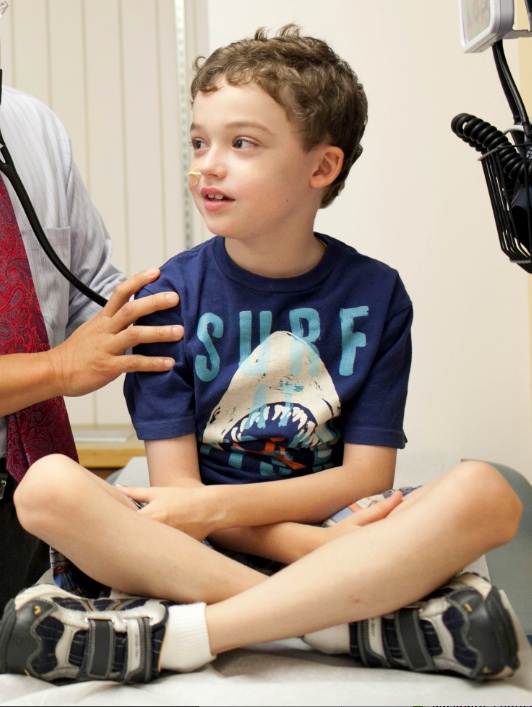
Eosinophilic esophagitis is often misdiagnosed, and seems to be on the rise. (Images: Gretjen Helene Photography)
As an infant, Cameron Ledin sneezed and rubbed his eyes whenever his mother, Kim, nursed him. His growth was slow, and as he got older, it became clear that he had serious feeding problems. When he was old enough for solid foods, he refused to eat. When he was old enough to speak, he complained that eating hurt his stomach.
Over the years, Cameron saw allergy specialists at Boston Children’s Hospital repeatedly, and every visit ended with more confirmed food allergies. By the time he was 7, Cameron could eat only 25 foods, and his pain and symptoms continued. Multiple tests—for airway, pulmonary and upper digestive tract problems—had inconclusive results.
Eventually, Cameron found his way Eitan Rubinstein, MD, a specialist at Boston Children’s Eosinophilic Gastrointestinal Disease Program. Rubinstein suspected a rare condition called eosinophilic esophagitis (EoE), a severe allergic inflammation of the esophagus where high levels of eosinophils—a type of white blood cell involved in allergic reactions—infiltrate the esophagus and accumulate.
Twenty years ago, no one in the medical field had heard of EoE; now, more and more cases are being reported. A regional review of a pathology database from a hospital center in Ohio noted a 4.3-fold increase in the number of reported cases between 2000 and 2003 alone (from 9.9 to 43 cases per 100,000).
“Up until recently, very few people in the medical field even knew EoE existed,” says Rubinstein. “But the number of people being treated for it is on the rise. We’re still unclear as to why it’s becoming more prevalent, but the numbers are consistent with an increase in those of other allergic conditions being reported.”
EoE is often misdiagnosed, and not just because of its rarity. EoE symptoms often change over time, or won’t appear until hours or days after the patient has been exposed to a trigger food, making it hard to pinpoint exactly what caused a flare-up. Complicating matters even more, many of the condition’s symptoms are very similar to those caused by gastroesophageal reflux disease (GERD).
With testing, Cameron’s doctors ruled out GERD, and then ran more tests to ensure his inflammation wasn’t being triggered by drug allergies, parasitic infection or hypereosinophilia (a disease where the body produces too many eosinophils)—each of which has its own specific treatment plan.
That established EOE as Cameron’s diagnosis, and food allergy as the likely cause. Cameron had two options: drugs and dietary restrictions. The most common drug therapies involve swallowed inhaled steroids such as viscous budesonide (Pulmicort), made into a slurry, or fluticasone (Flovent) inhalers to suppress the body’s allergic response to trigger foods.
Drugs did little to alleviate Cameron’s symptoms, so he began a battery of allergy tests to determine which foods were triggering his symptoms. Since Cameron was sensitive to a very wide range of foods, he went on an elemental diet—formulas made from amino acids and completely free of any milk or soy proteins—while his triggers are being identified. The formula is given via a feeding tube lieu of solid foods.
Cameron’s medical team started him on a long series of food trials, adding one solid food per week to his diet and performing an endoscopy a week later looking for any noticeable damage to his body. Foods passing the test were added to the “safe” list, while those producing symptoms or noticeable inflammation are considered off limits.
Thus far, Cameron’s food tests have had mixed results: rice and bananas have passed, but pork and potatoes have failed. “I think Cameron will be able to eat many things in time,” says Rubinstein. “As long as he avoids his established trigger foods, he can have a fully balanced diet and enjoy eating like everyone else.”
Food trial failures are difficult for 8-year-old Cameron, but Kim and her family’s care team are hopeful that the list will grow.
“Unfortunately, there’s no fast forward to get you through failed trials, or the symptoms and tears that come with them,” says Kim. “But Cam’s a tough kid. We take it one step at a time and celebrate the victories when we have them. We recently discovered a new recipe for one of Cameron’s safe foods and he can’t wait to share it with his care team. Moments like those really give us hope.”







